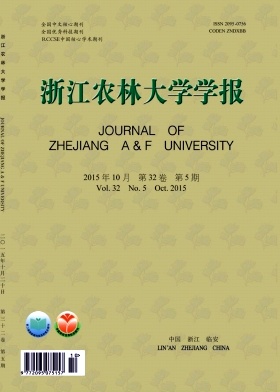Species selection for ecological garden trees in winter cities
doi: 10.11833/j.issn.2095-0756.2015.05.013
黑龙江省科技攻关基金资助项目(GC10C101)
- Received Date: 2014-11-21
- Rev Recd Date: 2015-01-20
- Publish Date: 2015-10-20
-
Key words:
- landscape architecture /
- winter cities /
- gardening species /
- comprehensive evaluation /
- selection mechanism /
- Harbin
Abstract: Species selection was conducted for cities with cold winters because they are faced with ecological problems including forest resource degradation; air, soil, and water pollution; and urban planning problems concerning patterns and species types. In order to reduce the pressure faced by ecological environment, while improving the efficiency of greening, research on species selection is necessary. Based on the development needs of an eco-garden for a typical winter city, Harbin, 30 typical species were selected, and the Analytic Hierarchy Process (AHP) method was used to establish a comprehensive evaluation system depending on their functions(resilience function, ecological function, aesthetic function and economic function). According to the functions of these species, establish 18 evaluation factors, get the weights by expert scoring method, score the index factors of each species separately based on the survey about their characteristics and then calculate by substituting the score into the evaluation system. Results showed 14 Ⅰ-level species including Ulmus pumila, Populus alba Berolinensis, and Crataegus pinnatifida; nine Ⅱ-level species including Pinus sylvestris var. mongolica, Picea koraiensis, and Acer saccharum; and seven Ⅲ-level species including Quercus mongolica, Acer mono, and Tilia amurensis. Species were also ranked according to each function since the differences of demand focus of different green ribbons like parks, sidewalks, etc. Fifteen priority species were selected for the different criteria, and a selection mechanism was established considering species function, species level, and development needs. Using this mechanism, according to the species level and green demand, legitimately plan the urban greening in Harbin [Ch, 1 fig. 6 tab. 11 ref.]
| Citation: | YU Botao, QI Mucun. Species selection for ecological garden trees in winter cities[J]. Journal of Zhejiang A&F University, 2015, 32(5): 743-748. DOI: 10.11833/j.issn.2095-0756.2015.05.013 |









 DownLoad:
DownLoad: